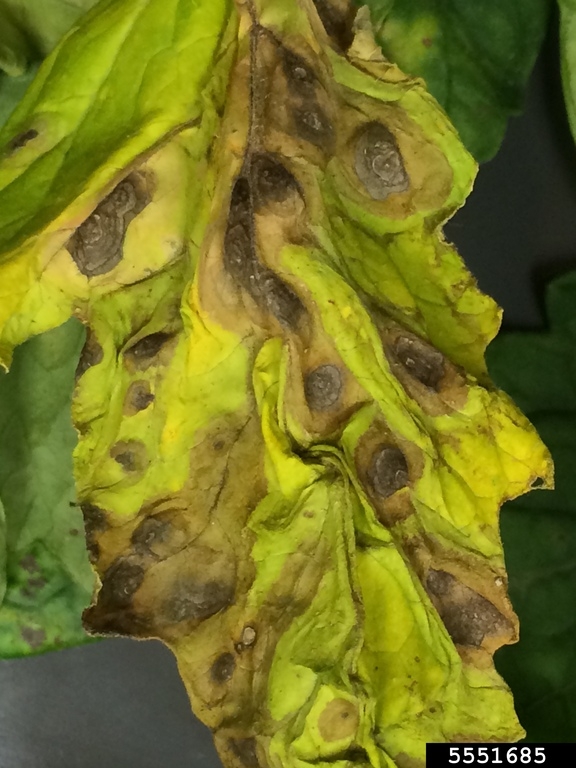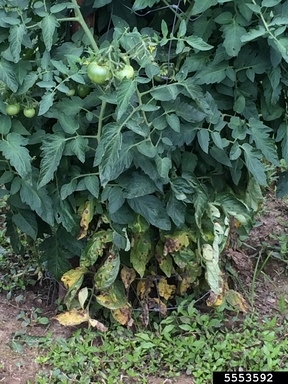In the western US our dry conditions keep many fungal diseases from becoming an issue. Since dry is something we do well in the Eastern Sierra, most of our garden diseases are viruses, not fungi. Things change some when we have summer monsoon conditions and rain.
For the past couple weeks, our humidity has been elevated with dew points above 50°F and temperatures are lower. If you cool your home with a swamp cooler you've probably felt the change. And last night it even rained!
When we get conditions like this in summer, we sometimes see diseases on vegetables that are normally not present.
I remember the last couple times we've had mid-summer conditions like this a disease called early blight appeared on tomatoes. Early blight is caused by the fungus Alternaria solani. In California it's uncommon outside of coastal areas. It gets its name from being mostly a disease that occurs early in the growing season.
I've never seen it be fatal here, nor have I seen it get on fruit since our weather soon gets back to super-dry like normal, but it can be alarming when it shows up. At this point in the season, tomato canopies are large and dense. The already high humidity is worse inside the canopy and temperatures are lower, leading to more disease, especially in places where other plants in the nightshade family have been grown before (potatoes, tomatoes, eggplant, etc.).
In the garden, I've only ever seen it on tomatoes in our area. We don't usually plant resistant varieties.
This disease usually starts at the bottom and works its way up the vines. Symptoms are yellowing with lesions that look a bit like bullseyes to me.
Look for this disease in the coming days, especially if you've been gardening in the same place a few years.
If it appears, we can usually control it by removing affected leaves when you see them. Chances are the weather will dry out soon and it no longer becomes an issue. Try not to water tomatoes in the afternoon when it's humid, and if you do need to water, aim for the soil, not the foliage. UC IPM recommends copper fungicides, but sprays are not usually needed in our area. It's more of a temporary condition here; more alarming than anything else. It doesn't seem to get out of control, especially if you remove the yellow leaves.
If you have questions about this or other diseases in your garden, contact our local Master Gardener helpline at immg@ucanr.edu.

